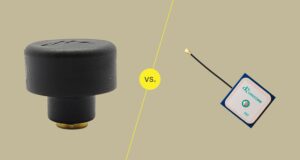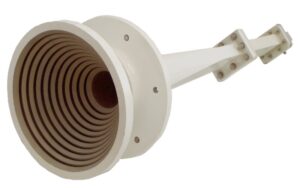Table of Contents
Power Requirements
Active antennas need an external power source to function, while passive antennas don’t. This simple difference affects everything from installation flexibility to long-term costs. For example, a typical active antenna draws 5V–24V DC, whereas a passive one relies solely on the signal it receives.
The power requirement is the most obvious difference between passive and active antennas. Passive antennas work without any external power—they simply capture and transmit signals as they are. This makes them ideal for low-power applications like FM radio, basic TV reception, or short-range Wi-Fi. Since they don’t need electricity, installation is straightforward: mount them, connect the cable, and you’re done.
On the other hand, active antennas require power—usually between 5V and 24V—to operate their built-in amplifiers. These amplifiers boost weak signals, which is why active antennas are common in cellular networks, satellite communications, and long-range RFID systems. For instance, a 4G/LTE active antenna might use 12V to amplify signals in rural areas where tower distances weaken reception. Without power, the antenna either underperforms or stops working entirely.
Power sources vary. Some active antennas use Power over Cable (PoC), where DC voltage is sent through the same coaxial cable that carries the signal. Others need a separate power injector or a dedicated supply. This adds complexity—especially in large setups—since you must ensure stable voltage to avoid signal distortion. A fluctuating power supply can introduce noise, degrading performance by 3dB or more in some cases.
Battery-powered active antennas exist but are rare due to efficiency trade-offs. A solar-powered active antenna might work for remote weather stations, but most commercial setups rely on grid or PoC solutions. Passive antennas win in portability—police radios, for example, often use passive designs because they don’t need extra power packs.
Energy consumption is another factor. While an active antenna’s amplifier might only draw 100mA, continuous use adds up. In a 100-node IoT network, active antennas could increase power costs by 15–20% compared to passive ones. However, the trade-off is often worth it: active antennas can extend range by 30–50% in weak-signal areas, reducing the need for additional repeaters.
For DIY users, passive antennas are simpler—no risk of wiring mistakes or voltage mismatches. But in professional settings like 5G small cells, active antennas dominate because they compensate for signal loss over long cable runs. A passive antenna’s signal can degrade by 0.5dB per meter in cheap coaxial cables, while an active one maintains strength over 50+ meters with proper power.
Ultimately, the choice depends on your needs. If you want plug-and-play convenience, go passive. If you need stronger signals over distance, active is better—just factor in the power logistics.
Signal Amplification
Active antennas don’t just receive signals—they boost them. While passive antennas rely on natural signal strength, active models use built-in amplifiers to enhance weak transmissions. This makes them 3x–5x more effective in low-coverage areas, but with trade-offs.
The biggest advantage of an active antenna is its ability to amplify weak signals before they degrade. A typical passive antenna might capture a -90dBm cellular signal, but an active antenna with a 20dB gain amplifier can push it to a usable -70dBm. This is why they’re essential in rural telecom towers, marine communications, and drone control systems where distance kills signal quality.
Passive antennas, on the other hand, don’t amplify anything—they only work with what’s already there. This makes them more predictable in strong-signal urban areas but useless in dead zones. For example, a TV antenna in a city might pull in 50 channels passively, but in a valley, you’d need an active model to avoid pixelation.
Here’s a quick comparison of real-world performance:
| Scenario | Passive Antenna | Active Antenna |
|---|---|---|
| Rural 4G signal (-95dBm) | Unstable, frequent drops | Stable, boosted to -75dBm |
| Long-range Wi-Fi (1km) | Weak or no connection | Clear signal with 15dB gain |
| Satellite radio (obstructed) | Static-heavy | Near-perfect reception |
Amplification isn’t free, though. Active antennas introduce noise—unwanted interference from the amplifier itself. Cheap models might add 3–6dB of noise, which can cancel out gains in marginal conditions. High-end units use low-noise amplifiers (LNAs) to minimize this, but they cost more.
Another downside: over-amplification. If an active antenna boosts a signal too much (say, from -60dBm to -30dBm), it can overload receivers, causing distortion. Some systems, like 5G small cells, automatically adjust gain to prevent this, but older equipment requires manual tuning.
Passive antennas avoid these issues entirely. A well-designed passive antenna in a strong signal area—like a Yagi for FM radio—can outperform an active one because there’s no noise or power dependency. But in challenging environments, like underground parking garages or dense forests, active amplification is often the only way to get a usable signal.
For critical applications—emergency responder radios, military comms, or aviation—active antennas dominate because reliability matters more than cost. Meanwhile, passive designs still rule consumer electronics (like car radios) where simplicity and low power draw are priorities.
The bottom line? If your signal is weak or inconsistent, go active. If it’s strong and steady, passive is simpler and cheaper. Just remember: amplification fixes weak signals but can’t create them from nothing—you still need a decent baseline.
Installation Complexity
Installing an antenna should be simple, but active models add extra steps—power supplies, grounding, and signal tuning. Passive antennas are basically “mount and forget,” while active ones need careful setup to avoid noise or damage.
The moment you unbox an active antenna, you’ll notice the extra components: power injectors, voltage regulators, sometimes even cooling fins for high-gain models. Compare that to a passive antenna, where installation is as simple as screwing it onto a mast and plugging in the cable. This difference matters when you’re on a rooftop in the rain—nobody wants to troubleshoot a faulty power injector at midnight.
Active antennas often require clean power sources. A poorly filtered 12V supply can introduce hum or interference, degrading signal quality by 10–15%. Marine installations, for example, use ferrite chokes and shielded cables to block engine noise from disrupting GPS or VHF signals. Passive antennas don’t care about dirty power—they either work or they don’t.
Here’s how installation compares in real-world scenarios:
| Task | Passive Antenna | Active Antenna |
|---|---|---|
| Mounting | Bolt to mast, connect cable | Same, plus power wiring |
| Cable Length | Up to 30m without major loss | Needs signal repeaters past 50m |
| Weatherproofing | Basic sealant suffices | Must protect power ports from moisture |
| Troubleshooting | Check connections only | Test voltage, grounding, and signal levels |
Grounding is another headache. Active antennas are more prone to static damage, so they need proper grounding rods—especially in lightning-prone areas. A passive antenna might survive a nearby strike with just a sacrificial surge protector, but an active one’s electronics often fry without a dedicated ground path.
For DIYers, passive wins. You can slap a FM radio antenna in your attic in 10 minutes. But professionals often prefer active systems because they compensate for installation flaws. A poorly placed passive antenna gets weak signals forever, while an active one can overcome obstructions with amplification.
“I’ve seen customers waste hours trying to power an active antenna with undersized wires, only to blame the antenna when it fails. Read the specs—voltage drop over long cables is real.”
— Telecom field technician, 12 years experience
The choice boils down to effort vs. performance. If you want quick and foolproof, go passive. If you need strong signals despite suboptimal placement, active works—but be ready for extra setup work.
Cost and Maintenance
Active antennas cost more upfront—sometimes 2-3x a passive model—but can save money long-term by reducing infrastructure needs. Maintenance is where things get interesting, with each type having very different failure points.
The price gap starts at purchase. A basic passive TV antenna runs 20−50, while an amplified version with similar range hits 80−150. For commercial systems, the difference grows: a passive cellular antenna might cost 200,butitsactivecounterpartwithbuilt−inamplifierscanexceed600.
Where the money goes in active antennas:
- Signal processors that clean up weak transmissions
- Weather-resistant housings for sensitive electronics
- Regulated power supplies to prevent voltage spikes
Passive antennas win on simplicity. With no circuits to fail, they often last 10+ years with zero maintenance—just occasional cleaning. Active models face more issues:
- Amplifier burnout from power surges (especially in lightning-prone areas)
- Corrosion at power connections if not properly sealed
- Gradual signal degradation as components age
A 5G small cell site using active antennas might need twice-yearly checks on power systems, while passive setups get inspected maybe every 2 years. Repair costs add up—replacing a failed LNA (low-noise amplifier) can cost $300+ in labor alone.
Hidden expenses matter too:
- Active antennas increase electricity bills slightly (about 5−15/year per unit)
- They require better cabling to prevent signal loss, adding 20% to installation costs
- Passive systems become cheaper at scale—no power infrastructure to maintain
That said, active antennas often pay for themselves in difficult environments. A single amplified antenna might eliminate the need for two passive ones plus a signal booster, saving thousands in hardware.
Insurance differs too. Many providers charge 10-15% higher premiums for systems with active components due to greater failure risks. Passive antenna networks typically get classified as “low-risk” installations.
For budget-conscious projects, passive is king. But when signal reliability directly affects revenue (like in broadcast or emergency services), the extra cost of active systems becomes justified. Just factor in that they’ll need more attention over time.
“We stopped using active antennas for security cameras after finding the power supplies failed within 3 years. Passive antennas with separate boosters lasted twice as long.”
— Municipal infrastructure manager







